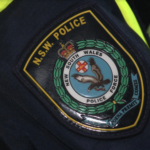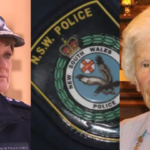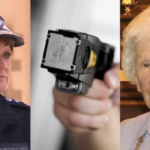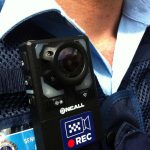Police Under Investigation Over Another Alleged Assault at Care Facility

Two South Australian Police Officers have been removed from active duty and are under investigation for potential assault charges after tasering and pepper spraying a man in his 60s at a care facility on 26 October 2023, leaving him with what police have described as ‘minor injuries’.
The investigation was triggered by a complaint made to South Australia’s Office for Public Integrity who then viewed footage from the officers’ body worn cameras.
Police have said that “concerns were identified” and both criminal and disciplinary investigations are underway.
Tasering our most vulnerable
This is a story that’s beginning to sound too familiar in Australia – police using weapons and force on elderly people.
Much has been debated, discussed and published about police use of ‘non-lethal- weapons such as tasers and capsicum spray, particularly since the death of Clare Nowland after she was tasered at a Blue Mountains nursing home earlier this year.
A lot of this discussion has focused mostly around under what type of circumstances it’s appropriate for police officers to use “excessive force”.
But this debate ignores the increasing body of research and anecdotal evidence that points to the fact that when you arm people, they will use the weapons and tools at their disposal, rather than deal with situations in an alternative way.
Innocent people being harmed by lack of police accountability
And of course, in some instances it is highly appropriate for police officers to be armed, so they can deal with dangerous and violent situations and protect themselves – but there are just so many incidents now coming to light where police appear to have taken the “shoot first ask questions later approach”. And innocent people are being injured or dying at the hands of police completely unnecessarily.
It’s incorrect to believe that weapons such as ‘tasers’ and capsicum spray are relatively harmless. Both can be deadly, particularly when used on elderly people, people with a disability, people taking some drugs or medications, as well people with some types of existing health conditions which affect the lungs and heart.
By and large, the New South Wales protocols for police use of tasers reflect this – tasers should not be used on an elderly or disabled subject, or a subject of particularly small body mass, unless exceptional circumstances exist.
Exceptional circumstances are defined as “circumstances that would cause a reasonable person to believe that prompt and unusual action is necessary to prevent actual bodily harm to self or others”.
The police officer who tasered great grandmother Clare Nowland faced court in September.
Senior Constable Kristian White has been charged with recklessly causing grievous bodily harm, assault occasioning actual bodily harm, and common assault. He has not yet entered a plea to any of the charges.
NSW Police are also still investigating the death of a woman in her late 40s who was tasered and shot with non-lethal “bean bag” rounds during a long stand-off with NSW police in Newcastle several weeks ago.
Police roll out new tasers without cameras
As non-lethal weapons, particularly tasers, remain highly controversial, news has emerged in recent months that the New South Wales Police Force is replacing tasers that have integrated cameras which automatically capture footage when they are discharged, with new tasers without cameras.
Taser footage is crucial for police accountability. Without it, police will rely on footage captured by “body worn” cameras.
Body cameras are not effective enough to protect the public
Body cameras are supposed to be worn by officers so that interactions with the general public can be recorded – without the need for consent. They were introduced to the NSW police force in 2014, to protect the public, and to provide additional evidence should it be required.
But to be effective, they must be turned on and off by the wearer, and over time this has proven to be problematic.
Unfortunately there have been documented incidents where police have forgotten to wear them, forgotten to turn them “on” or have discharged weapons before turning cameras on.
The use of body cameras by police is authorised by Section 50A of the Surveillance Devices Act 2007 (NSW).
The section says that police officers can use the devices:
- If they are acting in the execution of their duty (in public and private places), and
- If the use of the camera is overt eg if they inform the person who is to be recorded; and
- In the event they are recording a private conversation, if they are either in uniform or have provided evidence to other people in the conversation that they are a police officer.
NSW Police have advised that “police will wear BWV cameras on their body so they are clearly visible to the public.” It goes on to state that, where practicable, police will advise those they are talking to that their conversation is being recorded.
Despite the requirement of being “overt”, section 50A(3) says that recordings which are “inadvertent or unexpected”, or incidental to the use of the body-worn video by the police officer, will still be allowed under the law.
Police can “pick and choose” what they film
Further, a considerable and concerning issue is the fact that the decision to use a body camera remains discretionary, meaning that police decide whether (and when) to turn it on – even if a member of the public requests that an encounter be filmed.
This means that police can simply choose what they wish to film – which adds significant weight to the argument for camera-activated tasers.
But according to NSW Police the current model taser used by police has been discontinued, therefore “NSWPF recently procured the Taser 7, which is in the process of being rolled out to operational police across the state. The manufacturers of the Taser 7 have not included a camera in the unit.”
Even less accountability
NSW Police says it will be working with companies to try to make the body worn video cameras turn on automatically when the taser is drawn from its holster to be used. This of course, may take some time, yet the weapons are already being rolled out.
Of course, it will also come at an additional cost to taxpayers and will, ultimately, rely on police officers activating their body cameras – a decision that is entirely up to the officers, leading to instances where police have actually turned their cameras off before lethally assaulting members of the public.







